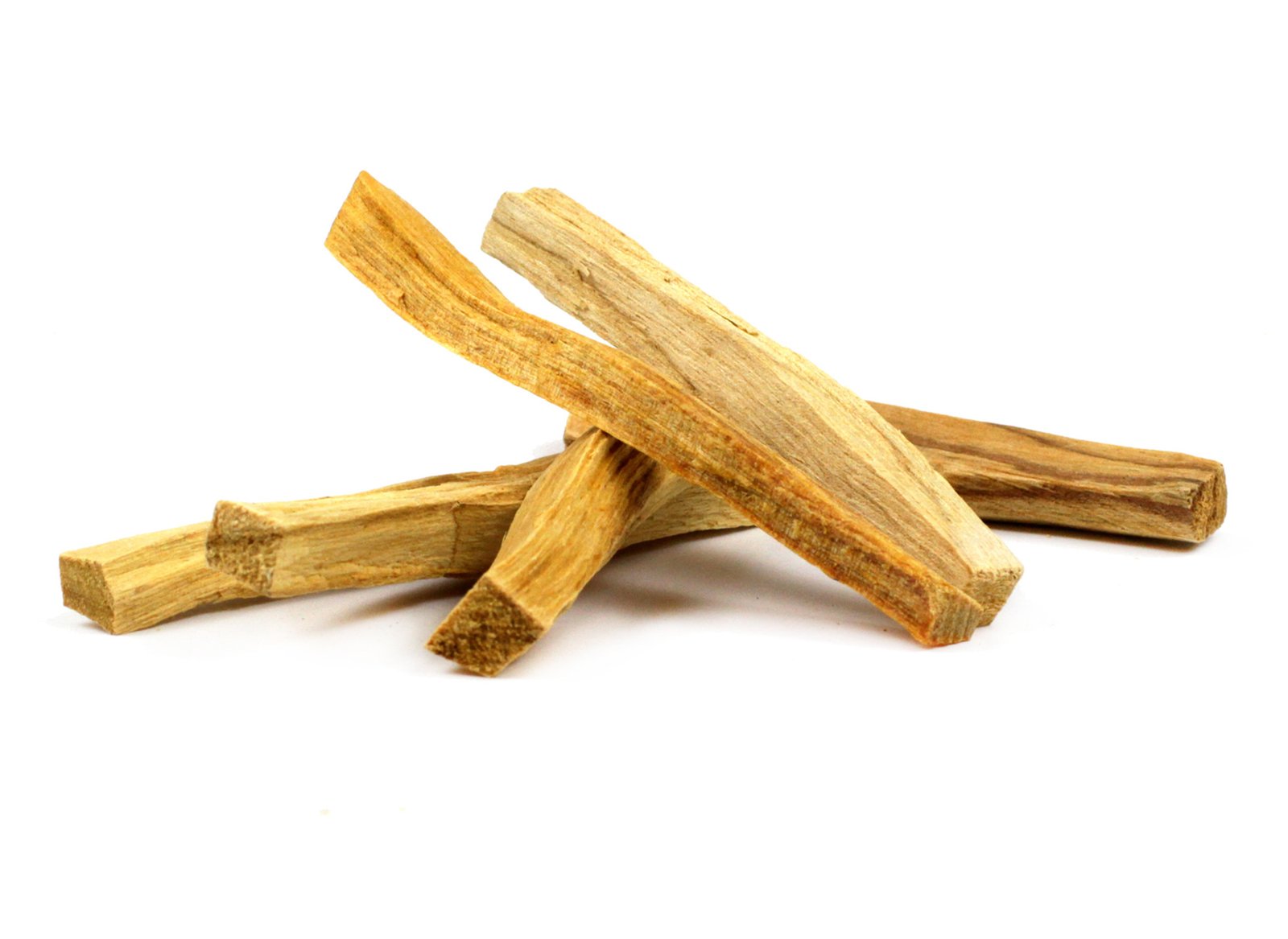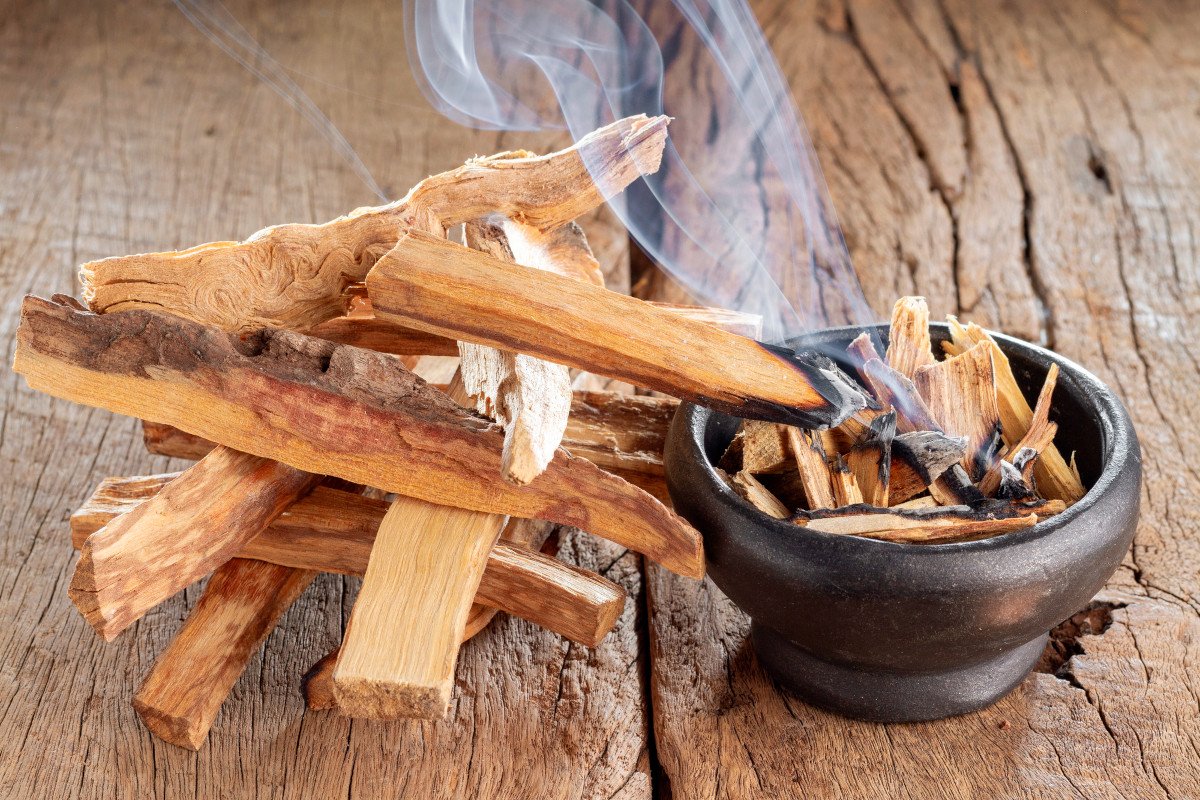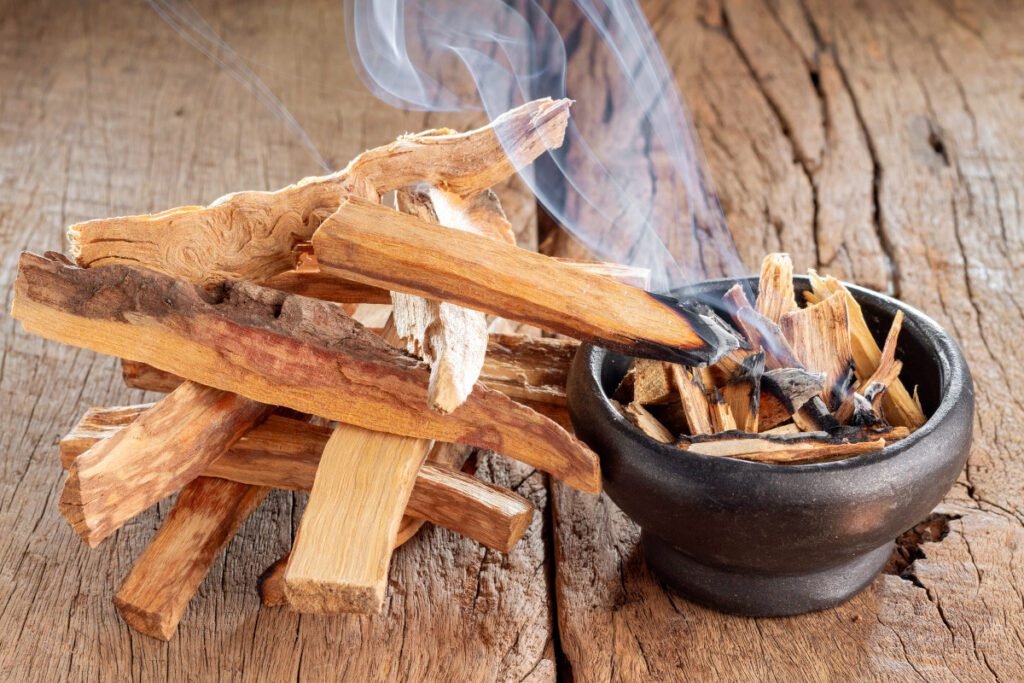Introduction
Step right in: you’ve just landed on your definitive guide to Palo Santo incense. This comprehensive dossier aims to unravel all the enigmas surrounding this mystic wood—both the literal flames it endures and the metaphorical spark it ignites in global consciousness. From its venerable rituals to its one-of-a-kind scent profile and myriad benefits, we’ll dissect each aspect of this age-old yet increasingly relevant aromatic marvel.
In a time when incense is reclaiming its stature, notably in the spheres of self-care and holistic well-being, Palo Santo commands attention. It’s not just an exotic fragrance; it’s a storied element deeply woven into the fabric of human history, spirituality, and health. In the ensuing narrative, we’ll strip away the mystique and offer you a panoramic view, devoid of jargon or superficiality. Whether your quest is spiritual expansion, mental equilibrium, or a deep dive into this enigmatic scent, consider this guide your compass.
Table of Contents
What is Palo Santo Incense?
In this olfactory and metaphysical journey, the first order of business should be to demystify Palo Santo incense. We shall take a closer look at its singular characteristics that raise it above other incenses and discuss the deep reverence that it has commanded across generations. Understanding its intrinsic qualities isn’t merely an academic exercise but an entrance to realizing its varied benefits, and to appreciate its unique fragrance in a unique way.

The Sacred Wood
Palo Santo, a name meaning “Holy Wood” in Spanish, emanates from the tree Bursera graveolens, native primarily to South America. It is not an ordinary wood; instead, it has been a deeply sacred tool for spiritual purification, ceremoniously healing many indigenous cultures of the Andean region. Shamans and spiritual healers have used Palo Santo for many centuries during their rituals, not because of the aromatic pleasantries it holds but due to the potent spiritual, emotional, and even medicinal powers it possesses.
Now, one might ask, “Why the reverence? It’s just wood!” Well, it is not “just wood.” Palo Santo is a very resinous wood, and therein lies the sacred power and aromatic qualities. This no ordinary wood; it is a repository of spiritual energy and healing properties. It is this very resin that is made into the incense sticks or cones so prized by many.
From Tree to Incense
The making of Palo Santo incense is as mysterious as the wood it comes from. Other types of trees are not required to die a natural death and decompose naturally for approximately four to ten years before they are even harvested. But this extended maturity has an important function: it enables the resin to impregnate the heartwood of the tree-forming, in the process, this powerful core that will be tapped later for score upon score of uses, including incense making.
This anointed wood is then sectioned into small pieces, usually sticks or shavings, which can either be used directly as kindling or ground further into incense cones or sticks. The resultant column of smoke is a potent distillate of the oils and resins native to the wood, heightening the many qualities of Palo Santo.
Or, in other words, a Palo Santo incense stick is something like a time capsule: it crystallizes years of organic processes and spiritual heritage, testifying to life itself beyond this simple product.
The Enchanting History of Palo Santo Incense
Having established what Palo Santo incense is and its intricate journey from tree to aromatic sticks, let’s turn back the pages of history to uncover its fascinating origins and enduring appeal. With each era it has traversed, each civilization it has encountered, Palo Santo has fortified its role as a sacred, multifaceted tool. Understanding its historical background offers a richer, fuller appreciation of why this incense deserves a special place in your life.
From Indigenous Roots to Global Recognition
Coming from the indigenous heartlands of South America, Palo Santo has deep roots, stretching from the Argentinean Gran Chaco into the thick woods of Ecuador and Peru. The wood of Palo Santo has been used for centuries by tribal shamans and spiritual leaders during sacred rituals while using its glowing embers for purifying areas of evil energies and inviting auspiciousness.
Yet, its influence does not stop with its cradle. Supported by a complex network of trade channels and cultural exchange, the mystique of Palo Santo crossed the frontier of its native South America. By the turn of the 20th century, international awareness of this magical wood had already remarkably risen to the level where it would firmly position this scent and spiritual source among the internationally well-acknowledged ones.
Palo Santo and Religious Practices
While most commonly associated with indigenous spirituality, Palo Santo has also found its way into various religious practices. It has been integrated into Christian rituals, much like frankincense and myrrh, and has been used in Buddhist and Hindu ceremonies as a purifying element. The versatility of Palo Santo transcends geographical and religious boundaries, making it a universally revered sacred tool.
The Sustainability Concerns and Modern Usage
It’s important to acknowledge the double-edged sword of Palo Santo’s growing popularity: sustainability concerns. As demand has increased, so has the need for responsible harvesting. Fortunately, many organizations and local communities are now involved in sustainable cultivation practices, ensuring that the sacredness of this holy wood is preserved for future generations.
In the modern context, Palo Santo has experienced a revival not just as a spiritual tool but also as an essential element in holistic health and well-being. From yoga studios to spa treatments and even as a home fragrance, its usage has expanded, proving that its appeal is not just historical but deeply contemporary.

The Distinct Aromatic Profile of Palo Santo Incense
Now that we’ve journeyed through the labyrinthine history of Palo Santo, it’s time to indulge in a different kind of exploration—one that engages not your mind but your senses. The aromatic profile of Palo Santo is, in many ways, as complex and multifaceted as its history. Let’s take an olfactory tour to uncover why this incense offers an unparalleled sensory experience.
The Scent Pyramid: Top Notes, Middle Notes, and Base Notes
Like a fine perfume, the fragrance of Palo Santo incense can unfold in layers. Top notes brighten up-your senses almost immediately with a somewhat citrusy lift. But don’t be so fast to judgment; that is just the opening act.
After just a few minutes, the middle notes of this scent come through. The citrus succumbs now to a sweet floral smell with touches of mint, much softer and rounder yet still interesting as the complexity keeps one’s senses tuned.
And finally, we get the base notes. This is really where Palo Santo shines its depth. The warmth of the wood fragrance wraps softly around you, and beneath that, a thin hum of smoke-like incense grounds it. It’s not an aroma in itself; it’s a tale unto itself, engaging yet deeply soothing.
Complementary Scents: The Art of Pairing Palo Santo
Palo Santo’s complex aroma makes it an excellent candidate for aromatic pairings. Because of its layered scent profile, it complements a range of other fragrances. For instance, the citrusy top notes pair wonderfully with light floral scents like lavender or chamomile. Its woodier base notes offer an excellent counterpoint to stronger, more resinous aromas like frankincense or myrrh. So, whether you’re using it in aromatherapy or simply as a home fragrance, consider creating scent combinations that elevate your Palo Santo experience.
The Chemistry Behind the Scent
To those who are more scientifically inclined, it is an extraordinary combination of natural terpenes that includes limonene and -terpineol. These organic compounds are responsible nearly in their entirety for Palo Santo’s distinct scent and its therapeutic properties. The molecules in these interact with our olfactory system to affect mood and emotional state. Thus, upon smelling that fragrance from the smoke of Palo Santo, one is not only wrinkling one’s nose at such a pleasant smell but taking part in an intricate biochemical interaction that uplifts one’s well-being.
The Multifaceted Benefits of Palo Santo Incense
The history has been recounted; the aromatic profile dissected. Now let’s transition from intellectual and sensory realms to the practical, pragmatic world of benefits. Palo Santo is not just a relic of history or an object of sensory delight; it is a tool for holistic well-being. Here, we’ll delve into how its usage transcends aesthetic or olfactory pleasures, offering tangible advantages for your mind, body, and spirit.
Aromatherapy and Mental Well-being
The mental health benefits of Palo Santo are perhaps its most widely acknowledged virtues, particularly in the realm of aromatherapy. When burned, the incense releases compounds that interact synergistically with our brain’s limbic system, the emotional control center. The result? A tangible relief from stress and anxiety, a soothing of the mind that goes beyond the mere pleasure of a pleasing scent.
But that’s not all. Preliminary studies suggest that the terpenes in Palo Santo may also possess anti-depressive properties, making it a natural mood elevator. It’s a holistic approach to mental well-being, aligning your emotional and cognitive states to produce a pervasive sense of peace.
Physical Health Benefits
While Palo Santo’s impact on mental well-being is widely acknowledged, fewer people are aware of its potential physical benefits. Traditionally, the wood has been used in South American folk medicine as a remedy for a range of ailments, from the common cold to inflammation. When burned as incense, the smoke acts as a natural air purifier, capturing harmful airborne particles and replacing them with beneficial ions.
Furthermore, some users report that the smoke can help relieve symptoms of asthma, allergies, and other respiratory issues, although scientific validation of these benefits remains ongoing.
Spiritual and Emotional Benefits
Last but certainly not least, let’s explore the spiritual advantages that Palo Santo incense brings to the table. It has long been used in various spiritual practices for its ability to purify energy and create sacred spaces. Its smoke is often used to cleanse auras, and it is a popular tool for grounding during meditation. The energy purifying aspects make it a regular feature in rituals aimed at releasing negative energies and inviting positive vibrations.

Conclusion: The Indispensable Alchemy of Palo Santo Incense
Wrapped in this beauteous history, the subtlety of aroma, and the profundity of benefits related to Palo Santo incense is one sure thing: Palo Santo is anything but a fly-by-night trend. It’s an irreplaceable spiritual and health tool, a holistic treasure that has been treasured for centuries and whose value will go on for many years to come.
From its ancient roots in the South American indigenous culture to its now widespread appeal in the modern world, Palo Santo has managed to prove itself as more than just another piece of aromatic wood: a healer, spiritual guide, and a key to unlock a way of life that is much in balance and harmony with one’s self.
In the chaotic world existing today, where stress and imbalance most often reign, the unique attributes of Palo Santo offer respite that is both natural and deeply effective. Its powerful combination of physical health benefits, emotional wellness properties, and spiritual enrichments makes it not just an option but an imperative for everybody who is in pursuit of a life of fittest balance.
When sourced in a responsible manner, Palo Santo points to a greater example of how ancient practices can find their place within the modern human experience without causing damage to our cultural heritage or the earth.
Frequently Asked Questions (FAQ)
Is Palo Santo incense safe to use?
Yes, Palo Santo incense is generally considered safe when used responsibly. However, if you have respiratory issues or are pregnant, consult your healthcare provider before use.
Can Palo Santo incense be used for meditation?
Absolutely, Palo Santo is commonly used for meditation due to its calming and grounding properties.
What is the best brand for Palo Santo incense?
While it’s subjective, looking for brands that source sustainably and offer pure, additive-free Palo Santo is key. Check customer reviews and do your research.
How does Palo Santo incense differ from other types of incense?
Palo Santo offers a unique aromatic profile, rich in nuances of pine, mint, and citrus. Its benefits also extend to mental, physical, and spiritual well-being.





